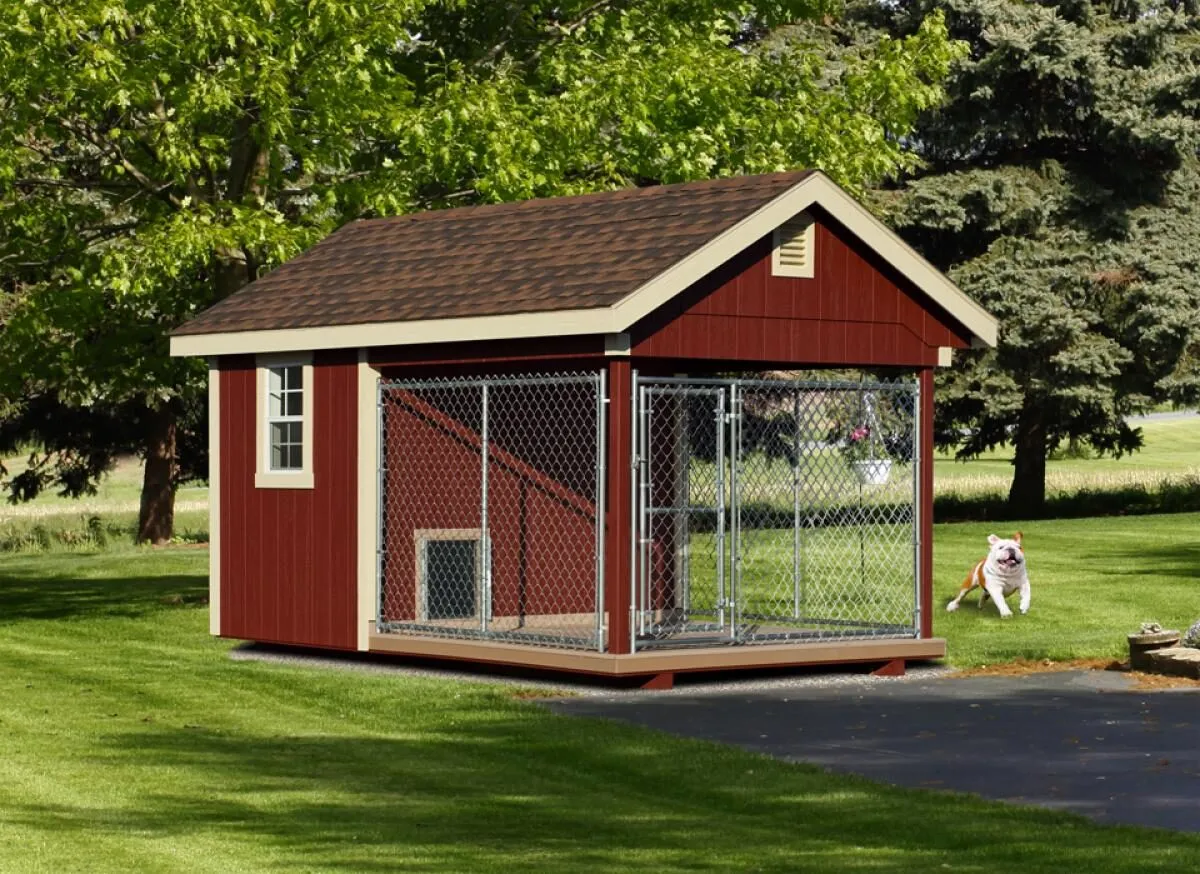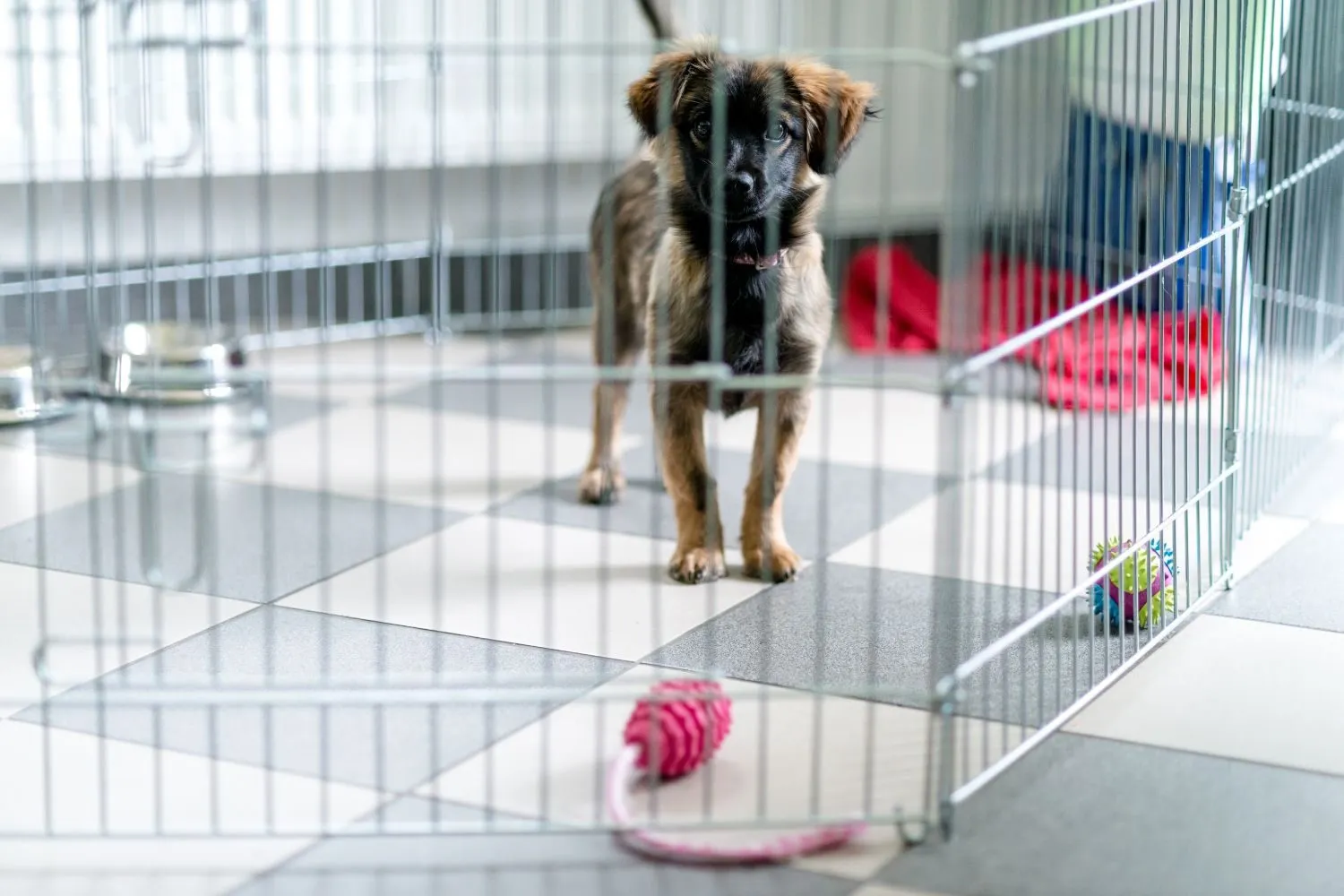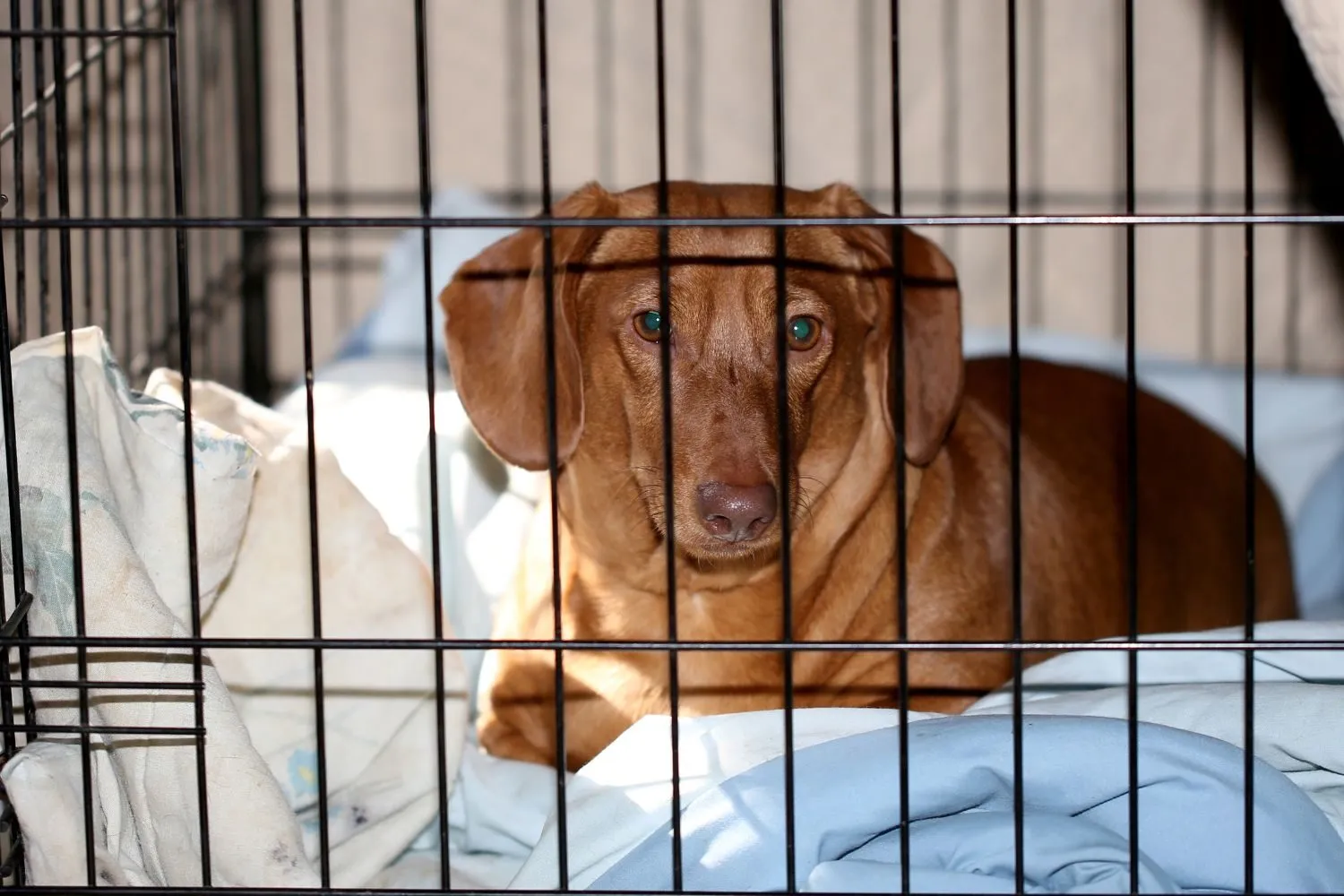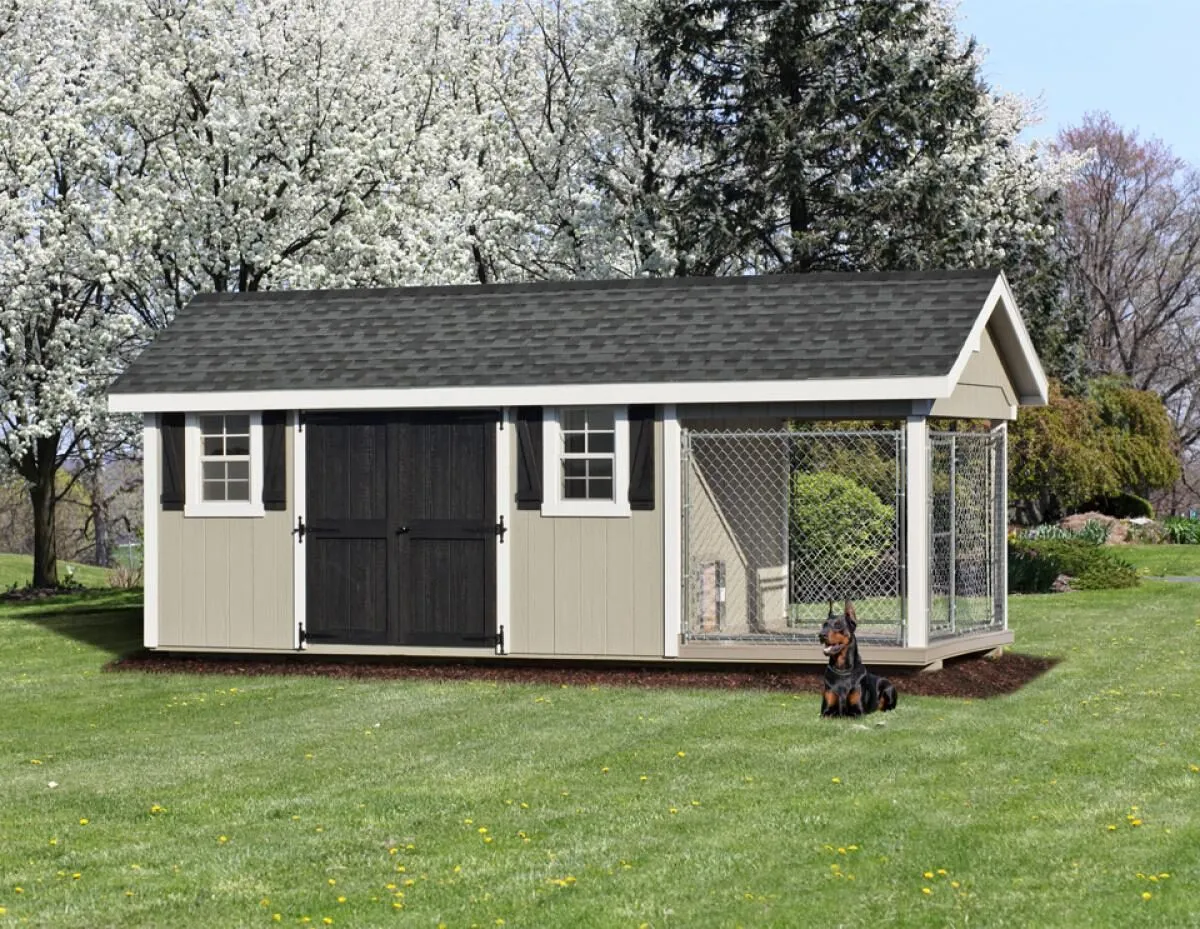For many dog owners, particularly those new to the world of canine companionship, the concept of kennel training can seem daunting. Yet, understanding How To Train A Dog To Stay In A Kennel is a fundamental step towards ensuring your pet’s safety, comfort, and good behavior. A kennel, when introduced properly, becomes more than just an enclosure; it transforms into a personal den where your dog feels secure and at ease, providing a safe haven when you’re away and preventing destructive behaviors around the house. This guide will walk you through a proven, step-by-step process to successfully kennel train your dog, fostering a positive association with their new space. If you’re looking for broader guidance, exploring topics like how to train your dog to pee on the balcony can also complement a well-rounded training regimen.
Understanding Kennel Training: What It Means for Your Dog
At its core, kennel training leverages a dog’s natural instinct as a den animal. In the wild, canids seek out small, secure spaces—dens—to sleep, find refuge from danger, and raise their young. These dens are places of comfort and safety. By providing a kennel, you are mimicking this natural environment, offering your dog a personal “den” where they can retreat for peace and quiet. This strategy not only provides a safe space for your dog but also offers you peace of mind, knowing they are secure and not causing mischief when you’re unable to supervise them. This understanding is crucial for successful kennel training, turning a potential stressor into a positive experience for your canine companion.
Step-by-Step Guide: How to Train Your Dog to Stay in a Kennel
Successfully teaching your dog to stay in a kennel requires patience, consistency, and a positive approach. Here are four simple steps to guide you.
1. Introduce Your Dog to the Kennel Positively
The initial introduction sets the tone for your dog’s relationship with its kennel. Begin by selecting a suitable location in your yard or home—an area that isn’t hidden or dark, allowing your dog to still feel connected to family activities.
Place a comfortable blanket or towel inside the kennel and leave the door open. Allow your dog to explore this new space at its own pace without any pressure. Throughout this process, speak to your dog in a positive, encouraging tone so they never associate the kennel with punishment. To build a positive association, drop small, tempting dog treats near the entrance, then gradually inside the kennel, encouraging your dog to enter voluntarily. If treats aren’t enough, tossing in a favorite toy can also be effective. It is vital to never force your dog into the kennel, as this can create fear and anxiety. Remember, this step can take anywhere from a few minutes to several days, depending on your dog’s personality, age, and past experiences.
 A dog exploring a spacious red outdoor kennel in a grassy yard, demonstrating positive introduction.
A dog exploring a spacious red outdoor kennel in a grassy yard, demonstrating positive introduction.
2. Make Mealtime a Kennel Experience
Once your dog is comfortable exploring the kennel, the next step in learning how to train a dog to stay in a kennel is to establish a positive connection through meal times. Begin by feeding your dog its regular meals near the kennel. This helps reinforce the idea that the kennel is a source of positive experiences.
As your dog becomes more comfortable, gradually move the food dish further inside the kennel. If they are still hesitant, place the dish as far inside as possible without causing them anxiety. With each feeding session, nudge the dish a little deeper into the kennel. Once your dog eats comfortably inside with the door open, try gently closing the door while they eat. Initially, open the door immediately after they finish. With subsequent successful feedings, gradually increase the duration the door remains closed, aiming for 10 minutes or longer. If your dog begins to whine, you may have increased the time too quickly. Crucially, do not let them out while they are whining; wait for a brief moment of silence before opening the door. Releasing them during whining teaches them that crying is a way to get out. Consistency in this step helps to build their tolerance and confidence, even for managing an unruly puppy who might initially resist.
3. Practice Longer Kennel Periods
After your dog is consistently eating meals in the kennel without fear, you can start practicing short periods of confinement. This step is critical for teaching your dog independence and comfort when alone in their kennel.
Call your dog to the kennel and offer a treat as a reward. Start using a consistent command like “kennel” or “bed” and point towards the inside of the kennel, luring them with a treat. Once they enter, reward them with the treat and close the door. Sit quietly near the kennel for a few minutes, then move to another room. When you return, sit quietly again for a short period before letting them out. This routine helps your dog understand that being in the kennel doesn’t mean permanent isolation. Practice this several times a day, slowly increasing the duration of alone time. As your dog grows accustomed to spending 30 minutes or more in the kennel, you can begin leaving them for longer periods while you are out or even letting them sleep there overnight. Remember, patience is key; this process can take days or even weeks to fully establish. Ensuring proper potty training habits, such as getting your dog to pee outside, can greatly assist in this phase by reducing anxiety about accidents in the kennel.
 A happy dog resting calmly inside a well-ventilated home kennel, illustrating successful training.
A happy dog resting calmly inside a well-ventilated home kennel, illustrating successful training.
4. Kennel Your Dog When Leaving and Overnight
Once your dog has successfully progressed through the previous steps and can comfortably stay in the kennel for extended periods, they are likely ready to spend nights or your departure times there.
About 10-20 minutes before you plan to leave the house, gently guide your dog into its kennel using your established command and a treat. Consider leaving a safe, durable toy with them to keep them occupied. Make your departure calm and understated; a quick goodbye and a treat for entering the kennel are sufficient. Avoid prolonged, emotional farewells, as these can increase your dog’s anxiety.
When you return home, maintain a subtle demeanor. Don’t greet your dog with excessive excitement immediately. This helps prevent them from associating your return with an overly dramatic event and reduces their anticipation anxiety for future departures. Continue to kennel your dog for short durations even when you are home, so they don’t exclusively link the kennel with being left alone. This final step solidifies their positive association with the kennel, ensuring they see it as a normal and comfortable part of their routine. For puppies, establishing a good routine can also include how to puppy pad train a puppy to manage toilet needs during these periods.
 A dog attentively watching from inside a wire kennel, demonstrating calm confinement.
A dog attentively watching from inside a wire kennel, demonstrating calm confinement.
Common Challenges and Solutions in Kennel Training
Even with the best intentions, you might encounter a few hurdles while learning how to train a dog to stay in a kennel. Understanding these common problems and how to address them can save you and your dog a lot of stress.
Extended Time in the Kennel
While a kennel is an excellent tool for safety and behavior management, it’s crucial to use it correctly. Over-kenneling can make your dog feel trapped, frustrated, and view the kennel as a punishment rather than a safe haven. If your dog is in the kennel all day while you’re at work and then again all night, they are spending too much time confined. Ensure your dog gets ample time outside the kennel for play, exercise, and bathroom breaks. A dog needs freedom to run, explore, and interact. Balance kennel time with plenty of positive experiences outside of it.
Whining in the Kennel at Night
Hearing your dog whine or cry at night can be heartbreaking, and it’s often difficult to discern if they genuinely need to go to the bathroom or if they are simply testing boundaries. It’s important not to give in immediately. Wait a few moments to see if the whining stops on its own. If you release them every time they whine, they will quickly learn that crying is an effective way to get out of the kennel. However, if your dog is a young puppy or hasn’t had a chance to relieve itself recently, a quick, no-fuss potty break might be necessary. Avoid making it a play session; simply take them out, let them do their business, and return them to the kennel immediately. Knowing when to take puppy outside for toilet can help prevent unnecessary whining due to bladder discomfort.
Choosing the Right Kennel for Your Dog
Now that you’ve mastered how to train a dog to stay in a kennel, selecting the appropriate kennel is the next vital step. The right kennel ensures your dog’s comfort and contributes to the success of your training efforts.
Prioritize a kennel that is well-ventilated and large enough for your dog to comfortably stand up, lie down, and turn around. While it might be tempting to buy a small kennel for a puppy, considering your dog’s adult size can save you money in the long run. For a growing puppy, you can use a divider to adjust the internal space, making the kennel smaller initially and expanding it as your dog grows.
A kennel that is too small will be uncomfortable and can lead to anxiety. Conversely, a kennel that is too large for a puppy without a divider can inadvertently encourage accidents inside, as your dog might designate one area for sleeping and another for relieving itself. This can hinder house training and lead to future accidents both in and out of the kennel. Therefore, a divider is an excellent solution for adapting a larger kennel to your dog’s current size.
 A large, well-designed outdoor dog kennel, indicating a safe and spacious environment for a dog.
A large, well-designed outdoor dog kennel, indicating a safe and spacious environment for a dog.
For a wide variety of quality options, explore reputable dog kennel collections. If you’re ready to provide your dog with an ideal custom space, consider filling out a quote form for a custom dog kennel tailored to your pet’s needs. Should you have any questions or require assistance in finding the perfect kennel, do not hesitate to reach out to experts who can guide you to the ideal solution for your furry friend.
